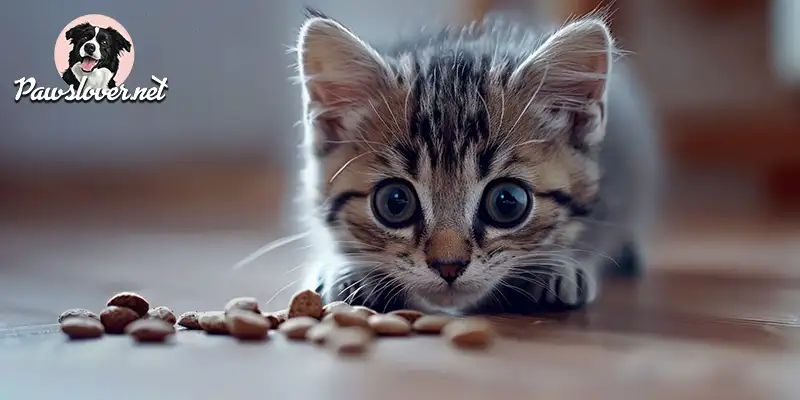Cats are known for being finicky eaters, and it can be concerning when your feline friend suddenly refuses to eat their dry food. This behavior can stem from a variety of reasons, including health issues, preferences for different textures or flavors, or even boredom with their current diet. If your cat doesn’t want kibbles, it’s important to address the issue promptly to ensure they get the nutrition they need. Here’s a comprehensive guide on what to do if your cat turns its nose up at dry food.
1. Identify the Cause
Health Issues: Before making any changes to your cat’s diet, rule out any potential health problems. Dental issues, gastrointestinal disorders, or other medical conditions can cause a cat to refuse food. If your cat is displaying other signs of illness, such as vomiting, diarrhea, lethargy, or weight loss, consult your veterinarian immediately.
Dietary Preferences: Cats can develop preferences for certain textures or flavors. Your cat may simply prefer wet food or specific types of dry food. Understanding these preferences can help you find a suitable alternative.
Boredom or Stress: Sometimes, a cat may stop eating kibbles due to boredom or stress. Changes in the household, such as new pets, moving, or changes in routine, can affect your cat’s eating habits.
2. Gradual Transition
Mixing Wet and Dry Food: One effective way to transition your cat back to eating dry food is by mixing it with wet food. Start with a small amount of dry food mixed into their favorite wet food and gradually increase the proportion of dry food over time.
Adding Toppers: Enhance the appeal of dry food by adding tasty toppers, such as a small amount of wet food, broth, or a sprinkle of freeze-dried treats. This can entice your cat to eat the kibbles.
Warming the Food: Warming the dry food slightly can enhance its aroma, making it more appealing to your cat. Be sure not to overheat it, as this can alter the nutritional value.
3. Try Different Dry Food Brands or Flavors

Variety: Experiment with different brands, flavors, and textures of dry food. Cats can be particular about their food, and finding the right one may take some trial and error.
High-Quality Options: Choose high-quality dry foods with real meat as the primary ingredient and avoid those with fillers like corn and soy. Premium brands often have more palatable and nutritious options.
4. Create a Feeding Schedule
Regular Meal Times: Establishing a consistent feeding schedule can help regulate your cat’s appetite. Feed your cat at the same times each day and remove any uneaten food after about 30 minutes.
Controlled Portions: Avoid free-feeding (leaving food out all day). Controlled portions can help stimulate your cat’s appetite and ensure they are eating their meals at designated times.
5. Addressing Environmental Factors
Minimize Stress: Ensure your cat’s feeding area is quiet and free from stressors. Loud noises, other pets, or high traffic areas can cause anxiety and deter your cat from eating.
Interactive Feeding: Use puzzle feeders or treat-dispensing toys to make mealtime more engaging. This can help stimulate your cat’s natural hunting instincts and make eating more enjoyable.
6. Incorporating Wet Food
Balanced Diet: If your cat continues to refuse dry food, consider incorporating more wet food into their diet. Wet food can provide essential hydration and nutrients, ensuring your cat gets a balanced diet.
Combination Feeding: Offer a combination of wet and dry food to provide variety and ensure your cat receives the benefits of both types of food.
7. Homemade or Raw Diets
Consult a Vet: If you’re considering homemade or raw diets, consult with your veterinarian or a pet nutritionist to ensure the diet is balanced and meets all of your cat’s nutritional needs.
Homemade Recipes: Carefully researched homemade recipes can be a good alternative, but it’s crucial to include all necessary vitamins and minerals.
Raw Diets: Raw diets can be beneficial for some cats, but they must be prepared and handled correctly to avoid health risks.
— Also read Human foods that your cat can eat —

8. Monitor Your Cat’s Health
Weight and Condition: Keep an eye on your cat’s weight and overall condition. Regular vet check-ups are essential to ensure your cat remains healthy, especially if their diet has changed.
Hydration: Ensure your cat stays hydrated, particularly if they are not eating dry food, which typically contains less moisture than wet food. Provide fresh water at all times and consider using a pet water fountain to encourage drinking.
Conclusion
A cat refusing to eat dry food can be a sign of various underlying issues, from health problems to simple dietary preferences. By understanding the cause and implementing gradual changes, you can encourage your cat to resume eating kibbles. Remember to consult your veterinarian if you suspect any health concerns and to ensure that any dietary changes meet your cat’s nutritional needs. With patience and the right approach, you can help your cat maintain a healthy and balanced diet.